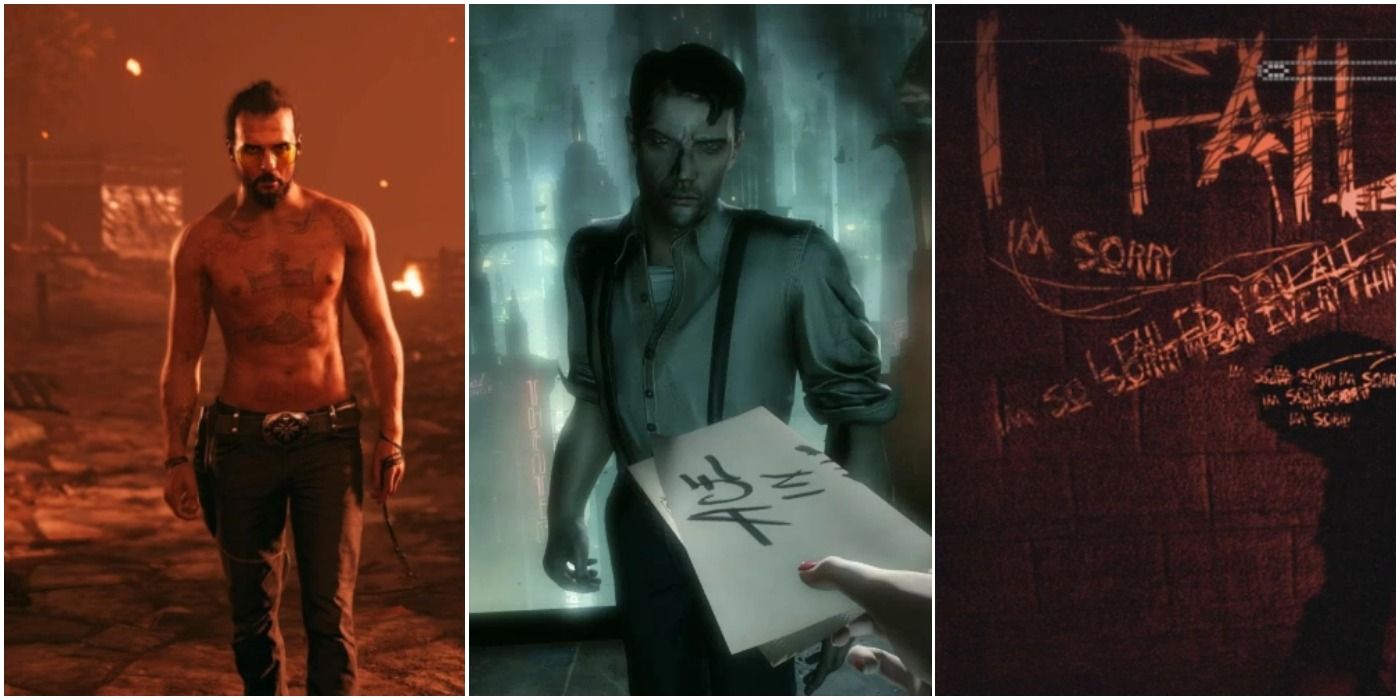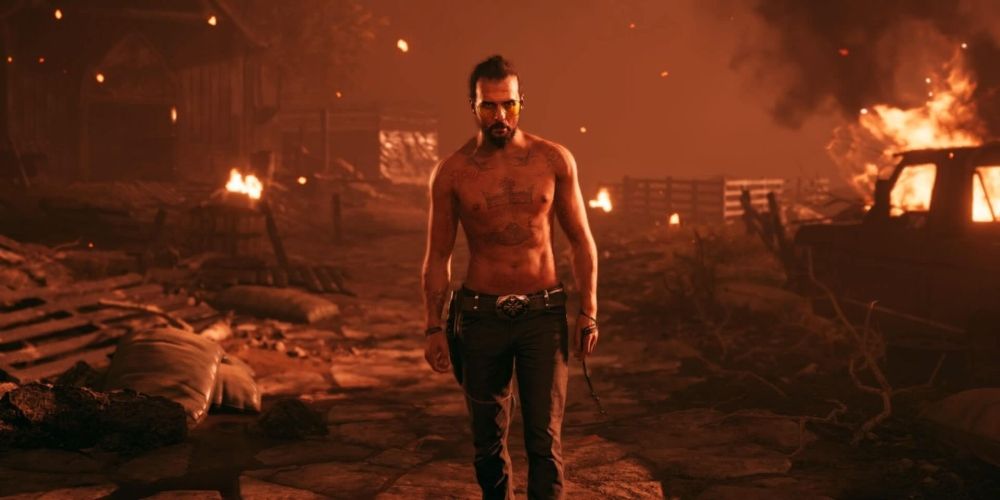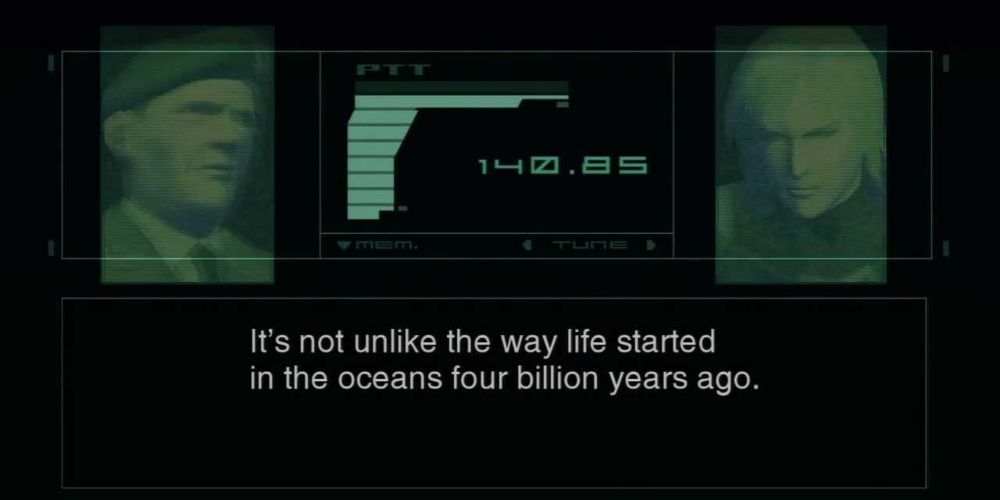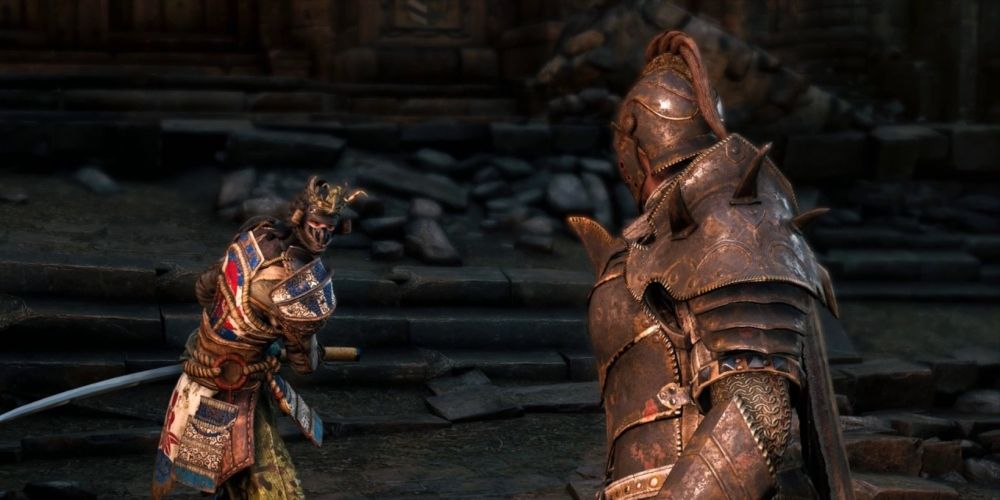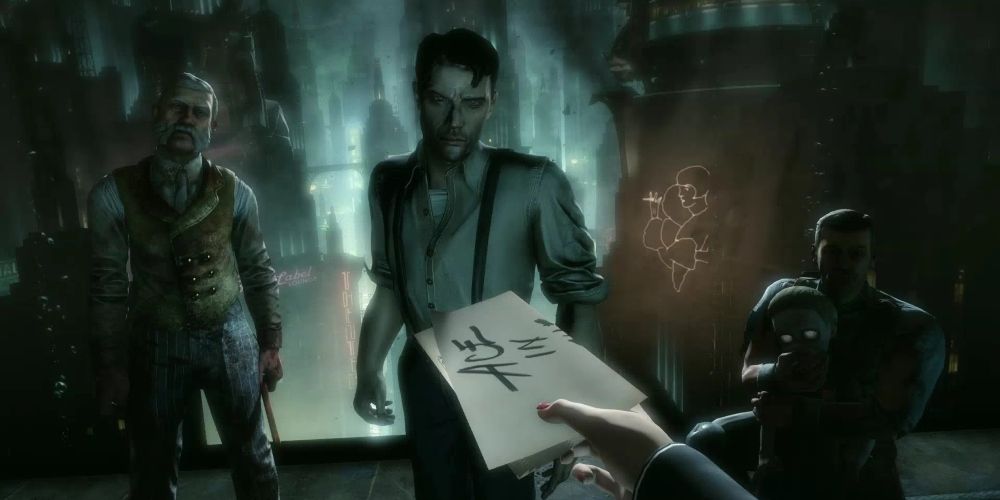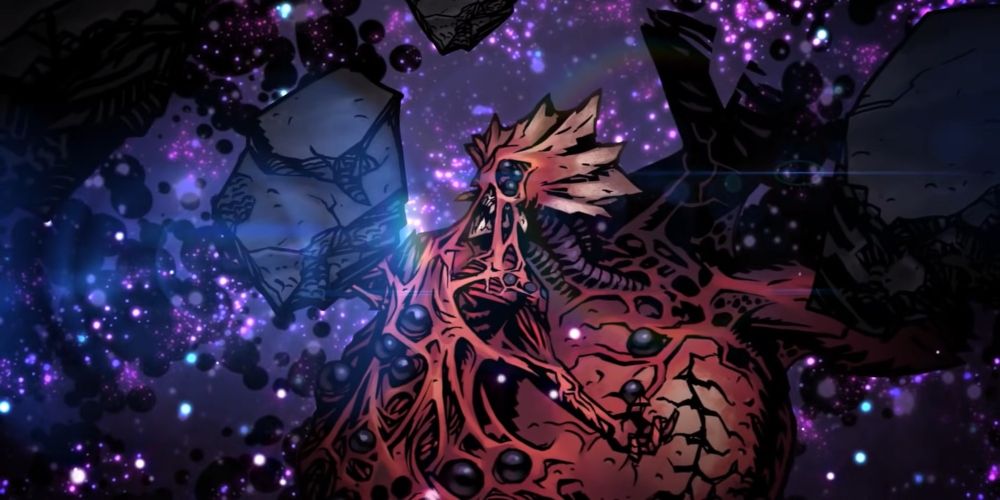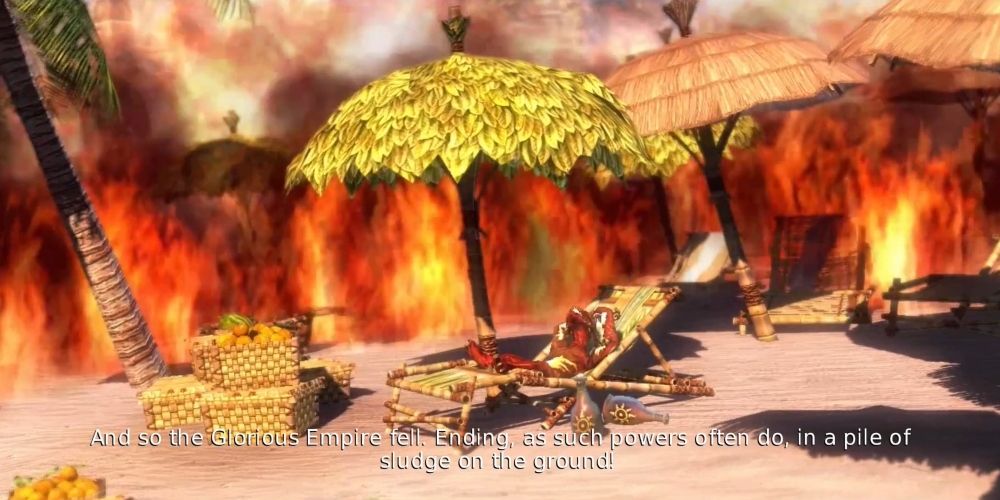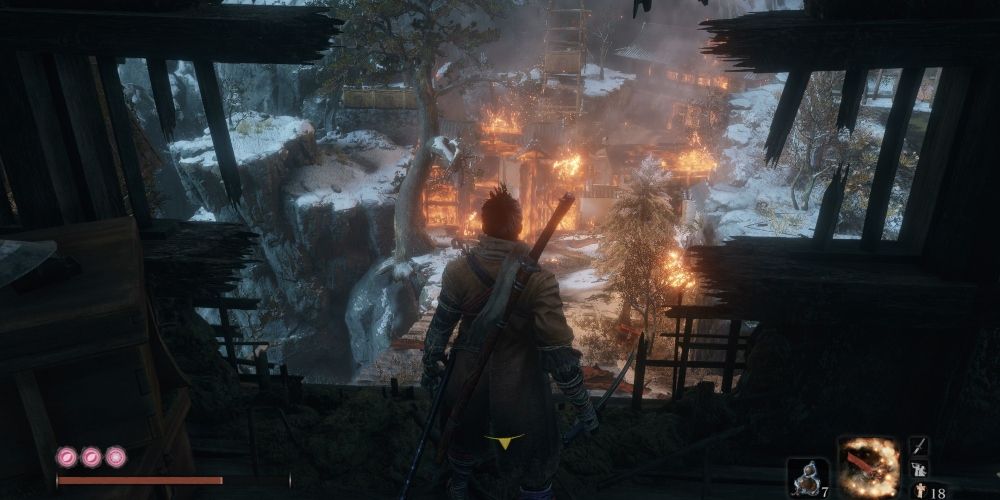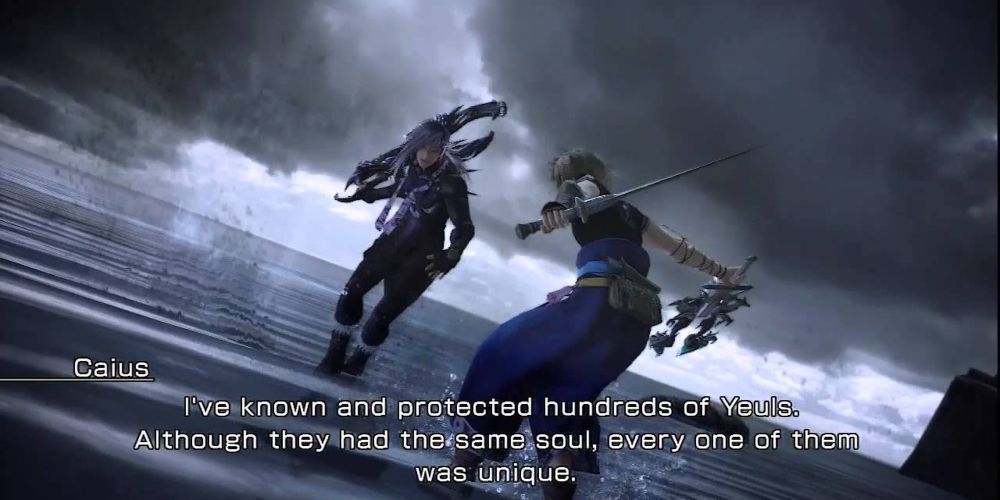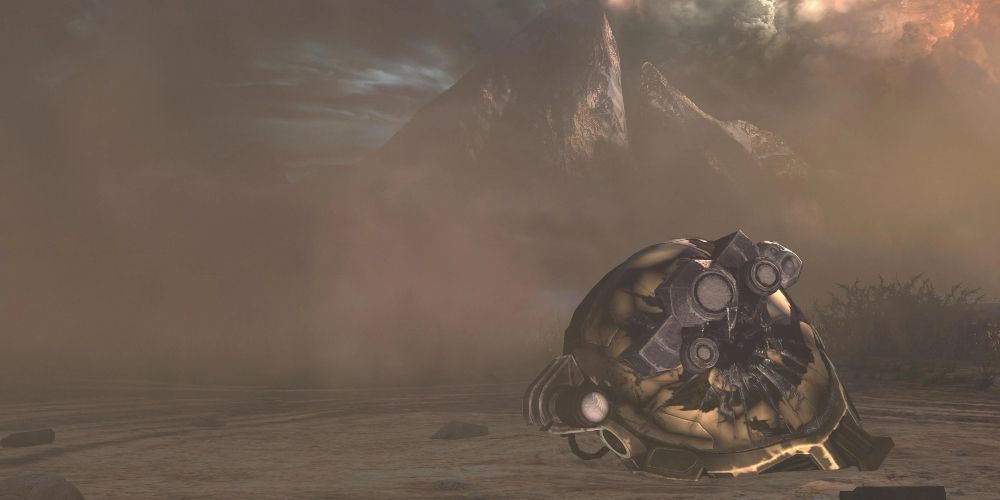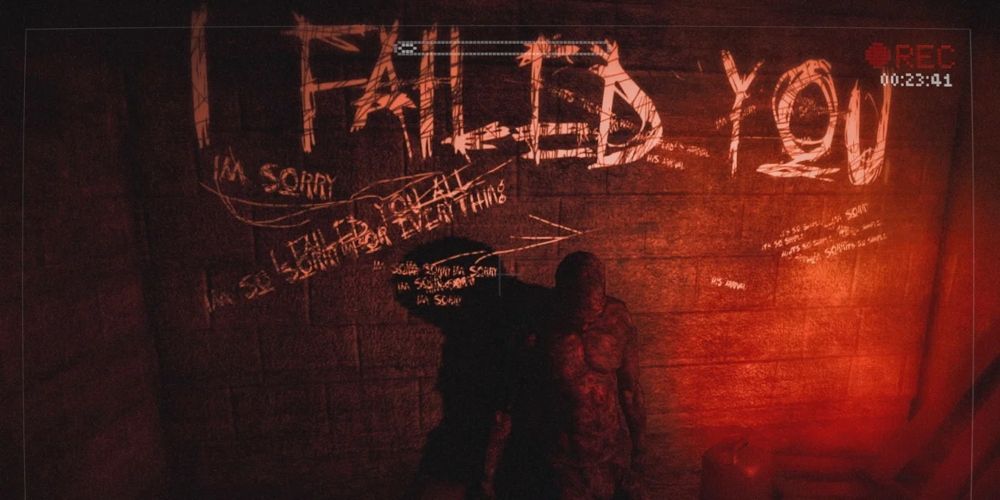Players expect to triumph in a video game. As a medium that is based around and rewards player skill, the general assumption is that the player will be able to progress through, defeat the final threat, and earn a happy ending. Particularly given that many video games end with a fight to the death between the hero and villain, it seems likely for the hero to win.
Some games, however, subvert this expectation. Particularly in more story-based games, the villain can triumph. Sometimes the villain is just too powerful for the hero, their true plan isn't revealed until too late, or they even manipulate the hero into fulfilling their goals. Either way, some games end with the villain as the last man standing.
10 There Is No Way To Bring Joseph Seed To Justice (Far Cry 5)
Far Cry 5 follows the player character Deputy as they attempt to bring down Joseph Seed, the leader of the Eden's Gate cult. He's used a mixture of religion and intimidation to forcibly take over Hope County, and has a legion of loyal followers opposing the police forces that seek to bring him in.
Despite the lengthy battle against Eden's Gate throughout Far Cry 5, there is no way for Seed to be brought down. Either the player retreats and serves as a brainwashed asset of Seed or they insist on fighting. If so, a heavily-foreshadowed nuclear war breaks out, devastating the world and leaving Seed in a position of influence in the post-apocalyptic world.
9 The Patriots Come Out On Top (Metal Gear Solid 2: Sons Of Liberty)
The third act of Metal Gear Solid 2: Sons Of Liberty shows a three-way war between Snake and Raiden, Solidus Snake and his allies, and the mysterious Patriots. Each faction has its own goals, but neither the Patriots nor Solidus are benevolent in their goals.
Ultimately, two of these factions lose out. The only significant thing Raiden achieves is killing Solidus, but he only does so at the behest of the Patriots. The protagonists are even unable to delay the plans of the Patriots, and the group take control of the world through misinformation. This creates the War Economy and leads to Metal Gear Solid 4: Guns Of The Patriots.
8 For Honor Has Apollyon Achieve Her Goal In Death (For Honor)
Despite being a primarily multiplayer-based game, For Honor has a singleplayer mode with a surprisingly in-depth story. The player controls a character from each of the three main factions in the game as they fight in a war between them and try to discover its cause.
The war is revealed to be the product of the villainous Apollyon, a social Darwinist who believes that triggering an eternal war will see the weak killed off. After a brief truce, the three factions devolve into infighting after Apollyon's death, bringing about For Honor's multiplayer and the war that Apollyon so wants.
7 Atlas Wins, But Sets About His Downfall (Bioshock Infinite: Burial At Sea)
The main plot of Bioshock Infinite ends on a bitter but victorious note as Elizabeth sets about killing every version of Zachary Comstock from existence before he can cause untold devastation - beginning with Booker DeWitt. This does not hold true for its two-part expansion, Burial aA Sea.
After tormenting another version of Comstock to death in the first part, the second part sees Elizabeth returning to Rapture without her powers. She gets caught up in the war between Andrew Ryan and Frank 'Atlas' Fontaine. In the end, Fontaine succeeds at getting his 'ace in the hole' and killing Elizabeth. Players of the first Bioshock know that this ace in the hole, the mind-controlled Jack Ryan, will ultimately kill Atlas as well.
6 There Is No Way Of Defeating The Villain (Darkest Dungeon)
The plot of Darkest Dungeon is a fairly simple one. The player is the descendant of the monstrous warlock who once owned the Estate that the game takes place on, attempting to make right of the things he did. This requires them, once they are strong enough, to delve into the Darkest Dungeon and confront the monstrous creature known as the Heart of Darkness.
Where this would be the victory in any other game, however, Darkest Dungeon drops a bombshell. The Heart of Darkness is an unstoppable creature that is the progenitor of all humanity. All defeating it does is force it dormant, and it can grow stronger than ever from the carnage the player causes throughout the game.
5 Overlord Has Nothing But Villainous Endings (Overlord)
In most games, the player either plays a heroic figure or has a choice if they commit villainy. In Overlord, the game puts a twist on RPG tropes by having the player control some form of villain, their primary choice being what sort of evil they wish to be.
The player character's goal is anything other than sympathetic. Although they are seeking out and destroying corrupted heroes, they are only doing so to cement their rule over the land. Regardless of how evil the player character is or which ending they get, they finish Overlord by cementing their hold over the helpless populace.
4 The Interior Ministry Triumphs (Sekiro: Shadows Die Twice)
The main focus of Sekiro: Shadows Die Twice is the relationship between Wolf and his master, Kuro, and their attempts to end Kuro's immortality. In the background, however, all of the game's events are caused by the group known as the Interior Ministry, who are preparing to invade and subjugate the land of Ashina.
Wolf is sworn to Kuro above any and all politics, so he has no qualms in massacring Ashina's defenders and denying them Kuro's power. As a result, the Interior Ministry are able to easily succeed in their invasion. In real-world history, this brought about the end of the dangerous and unstable Sengoku Period, but the viciousness and callousness of the Interior Ministry casts a distinctly villainous shadow over it.
3 Caius Always Succeeds, No Matter What (Final Fantasy XIII-2)
If it's unusual for a villain to win in a game, it's even more unusual in a game that heavily features time travel. Nonetheless, manipulating time travel is key to Caius' plot in Final Fantasy XIII-2 because he seeks to bring about an end to linear time. He does this to prevent the timeline from being changed, an action that repeatedly kills his beloved Yeul.
By Final Fantasy XIII-2's ending, there is nothing the protagonists can do. Any of their actions simply further Caius' plan to bring about an end to time. As such, Final Fantasy XIII-2 ends with him succeeding and leaving the world a chaotic, timeless place while the protagonists seem unable to stop him.
2 The Covenant Win A Pyhrric Victory At Reach (Halo: Reach)
The Fall of Reach is one of the biggest moments in the backstory of the Halo series, so the player is under no illusions of Halo: Reach's outcome. The Covenant destroy humanity's second most-defended planet, devastating the UNSC and making humanity's extinction a near-guarantee.
However, it is a short-lived victory. Aside from the heavy cost of taking Reach, the plot of Reach sees Noble Six return Cortana to the Master Chief. This allows the Chief and Cortana to find the titular superweapon in Halo: Combat Evolved, setting in motion the events that lead to the UNSC's victory in the original Halo trilogy.
1 There Is No Escape From A Villainous Ending (Slender: The Arrival)
As an ever-evolving and changeable story from 'Creepypasta', Slender Man isn't a character with concrete goals or motivations. Nonetheless, the game Slender: The Arrival makes it clear that its protagonists barely inconvenience him and that he wins in the end.
Much of Slender: The Arrival is spent with player character Lauren attempting to learn what happened to her friend and getting caught up in her Slender Man investigation. By the end of the game, Lauren learns that her friend is now a slave of Slender Man, fellow investigator RC burns himself to death, and Lauren is last seen being dragged away.

